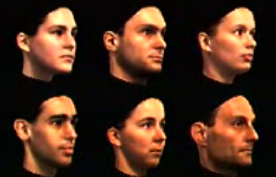Web X.0
Trying to understand this overwhelming phenomenon, which is powerful, vast, and fast. Seeing how it may shape opportunities in business, education, politics, and other fields.
February 13, 2007
Morphing Faces
Just a quick link to an entertaining YouTube video showing how to model and animate 3-D faces.
Labels: diversion
January 22, 2007
Value in Robinson's Article
Take a look at this article. It seems like a discussion on pricing in the biotech industry. But it is also putting our attention on how the old school collaborative networked economy interacts with the private market-oriented businesses, as Yochai Benkler articulated in his book The Wealth of Networks.Labels: health care
January 10, 2007
Wealth of Networks
I highly recommend reading Yochai Benkler's book “Wealth of Networks.” It is a balanced articulation of what the Internet and Web 2.0 is enabling in the development of new forms of social collaboration that are not adequately recognized as such by both private/regulated market advocates and for welfare advocates.One of the things that struck me most is Benkler's capacity to create a perspective in which he can show that these new forms of collectives are rooted in old practices that have existed forever. And he shows these practices can gain major significance if
- The neutrality of the web, access to the web, Open Source initiatives, and General Public Licensing type of legislation is improved, and
- The aggressive move toward Intellectual Property laws and regulations, and control by corporations, is counter-balanced.
Read his book and get involved in his wiki.
Labels: networks
October 29, 2006
Networks
The word “network” is used in different contexts in different domains.In the engineering and technological context, it is used to denote a set of equipment interconnected to deliver a particular functionality. It used in a social context to denote a group of people that collaborate to address shared concerns. Or in neurophenomenology, to denote patterns of neural activity that correlate with specific behaviors.
In all these cases, networks distinguish a unity constituted by a set of interrelated components. However, the disciplines and practices required to design, develop or operate in each of these classes of networks are very different. Very often, especially in a business context, disciplines and practices relevant to a specific class of networks are used to think and act in another type of network, producing significant miscoordination and waste.
Labels: networks